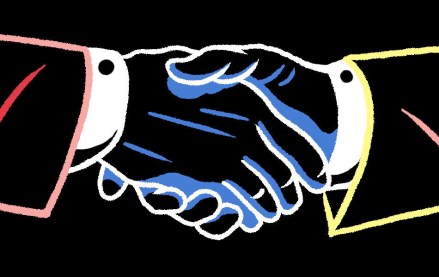Save 50% on a 3-month Digiday+ membership. Ends Dec 5.
Snap’s AI play targets the advertisers tired of Meta and Google

Snapchat is betting that AI-powered ad tech might finally help it shrink the distance between itself and the platforms that have long outpaced it.
Last month, the mobile messaging app launched its first major iteration of an AI-powered suite of tools called Smart Campaign Solution — akin to Google’s Performance Max or Meta’s Advantage+ — to support advertisers, but particularly SMBs.
While the tools are still in test mode with a select group of advertisers, chief business officer Ajit Mohan believes the combination of having more performance driven capabilities has the potential to put Snapchat into the tier one platform bracket.
“My theory has always been that if there is intent and finally we’re showing results, that’s when the money will move, and hopefully we’re starting to do that,” said Mohan.
That hope, he continued, rests on a specific kind of advertiser — one that’s already disillusioned with the returns they’re getting from Meta and Google and is actively looking for an alternative. Snap doesn’t think it has to beat the incumbents outright. It just has to give enough underwhelmed advertisers a reason to test and shift.
“In some ways, Meta and Google have become the equivalent of broadcast television; you can’t get fired for putting money there anymore,” Mohan said. “Yet the consistent message I hear from clients and agencies is, ‘We’re too reliant on them’.”
That reliance has less to do with love for the incumbents and more to do with the lack of credible alternatives. Snap knows this all too well. Its audience has never really been the problem; its ability to turn that audience into measurable, repeatable performance for advertisers has.
This latest push is an attempt to change that narrative not by beating Meta or Google at their own game but by giving advertisers a reason to try something else. Whether that’s enough to shift ad dollars meaningfully is still an open question. But Snap seems to think a window is opening.
“Is the last 15%, 20%, 30% of the investment going to Meta and Google getting you the same return as the first 5% or 10% or should you be using that [last bit of investment] and moving into a platform that can deliver better results?,” said Mohan. “I think that’s where we need to break through the inertia, because it’s [hard] work to deal with so many platforms.”
But the tide is starting to turn it seems.
Over the past year or so, Mohan said, smaller advertisers have been shifting more of their budgets to Snap from its larger rivals.
“They’re the most demanding advertisers because they won’t move [their ad budgets] unless there’s a [worthwhile] reason to move,” he said. “But I also think there’s still a huge opportunity for us to reintroduce ourselves to large clients, and nudge them to be more thoughtful about shifting spend in a way that they say they have been wanting to do for a while.”
Even so, the long game is still about pushing Snapchat to the larger advertisers — the ones who say they want to diversify but haven’t made the leap. Mohan thinks the company now has a better case to make. The question is whether the market is finally ready to listen.
More in Marketing

Future of Marketing Briefing: The tells and flops that will define Omnicom-IPG mega holdco
The real story will sit in how this newly fused entity behaves — whether it breaks from the patterns that defined both parents or simply scales them.

In Graphic Detail: CMOs at a crossroads of power and proof
CMOs are closing out another year defined by churn and shifting ground.

As Black Friday nears, fake apologies from brands are all over Instagram
Brands have taken to social media in advance of Bliack Friday to ask followers for forgiveness. The catch: They’re apologizing for their products being too good.







